Physiotherapy for Spondylolisthesis: Your Road to Pain-Free Living
Spondylolisthesis is a spinal condition where one vertebra slips forward over the vertebra below it, leading to instability and pressure on nerves, which can cause significant discomfort, pain, and in some cases, even neurological symptoms. While surgery might be necessary for some severe cases, physiotherapy offers a non-invasive approach to manage symptoms and improve function. At Urban Sports & Physio Centre, we specialize in creating personalized treatment plans to help patients with spondylolisthesis live pain-free.
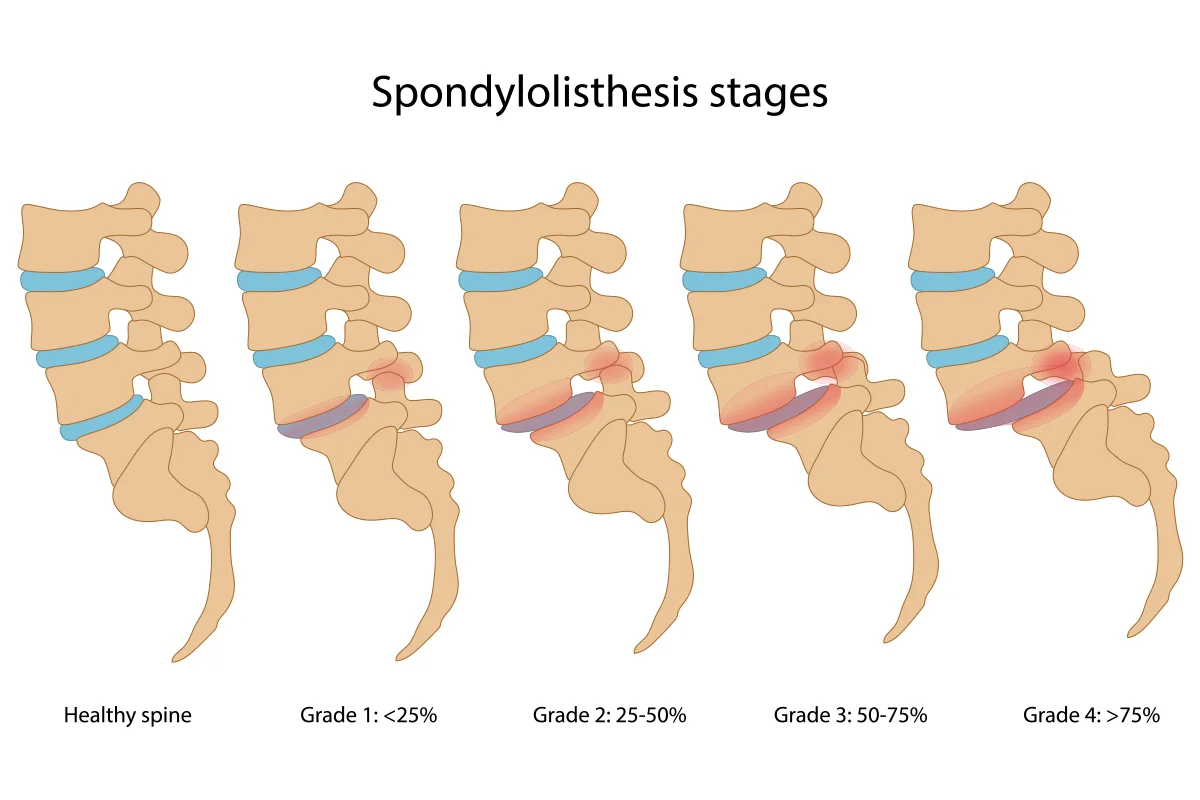 Understanding Spondylolisthesis
Spondylolisthesis can occur due to age-related degeneration of the spine, trauma, or congenital conditions. The condition most commonly affects the lower back (lumbar spine), but can also affect the neck. The displacement of the vertebrae can cause irritation of nearby nerves, resulting in pain, muscle spasms, numbness, and weakness. Some of the symptoms include:
Understanding Spondylolisthesis
Spondylolisthesis can occur due to age-related degeneration of the spine, trauma, or congenital conditions. The condition most commonly affects the lower back (lumbar spine), but can also affect the neck. The displacement of the vertebrae can cause irritation of nearby nerves, resulting in pain, muscle spasms, numbness, and weakness. Some of the symptoms include:
- Lower back pain
- Stiffness in the back
- Muscle spasms
- Numbness or tingling in the legs
- Difficulty walking or standing for extended periods
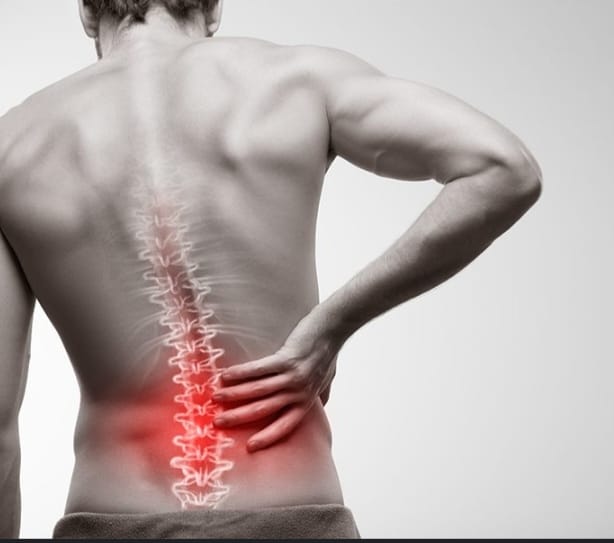 Why Physiotherapy Is Effective for Spondylolisthesis
Physiotherapy addresses spondylolisthesis by focusing on spinal stabilization, pain management, and improving movement and strength. The goal is to reduce the stress on the affected vertebrae, alleviate pain, prevent further slippage, and enhance the overall quality of life.
Here’s how physiotherapy can help you manage spondylolisthesis:
1. Core Strengthening Exercises
One of the most effective ways to manage spondylolisthesis is by strengthening the muscles that support the spine, particularly the core muscles. The core muscles, which include the abdominals, lower back, and pelvic muscles, act as a natural brace for the spine. When these muscles are weak, the spine becomes more vulnerable to instability and increased stress on the vertebrae.
At Urban Sports & Physio Centre, we provide a series of core-strengthening exercises designed to improve posture, stability, and spinal alignment. Common exercises may include:
Why Physiotherapy Is Effective for Spondylolisthesis
Physiotherapy addresses spondylolisthesis by focusing on spinal stabilization, pain management, and improving movement and strength. The goal is to reduce the stress on the affected vertebrae, alleviate pain, prevent further slippage, and enhance the overall quality of life.
Here’s how physiotherapy can help you manage spondylolisthesis:
1. Core Strengthening Exercises
One of the most effective ways to manage spondylolisthesis is by strengthening the muscles that support the spine, particularly the core muscles. The core muscles, which include the abdominals, lower back, and pelvic muscles, act as a natural brace for the spine. When these muscles are weak, the spine becomes more vulnerable to instability and increased stress on the vertebrae.
At Urban Sports & Physio Centre, we provide a series of core-strengthening exercises designed to improve posture, stability, and spinal alignment. Common exercises may include:
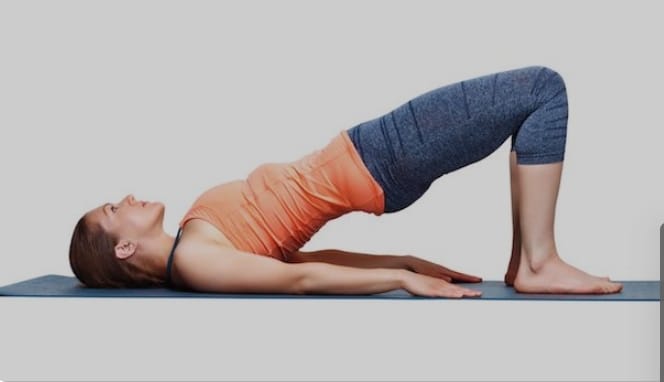
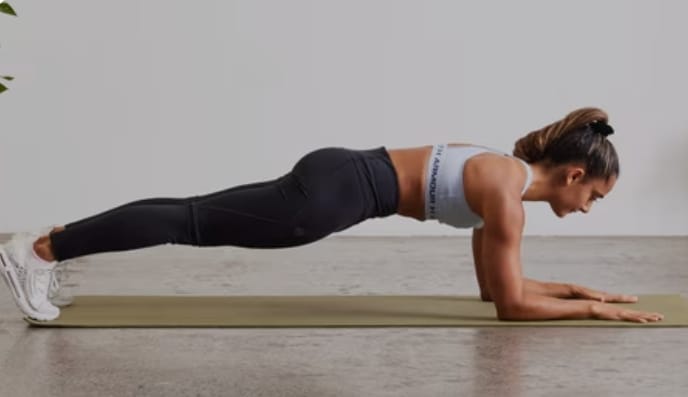 Planks
Planks
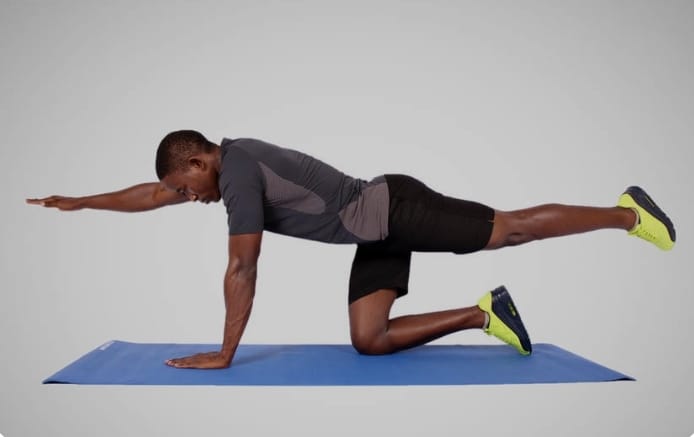
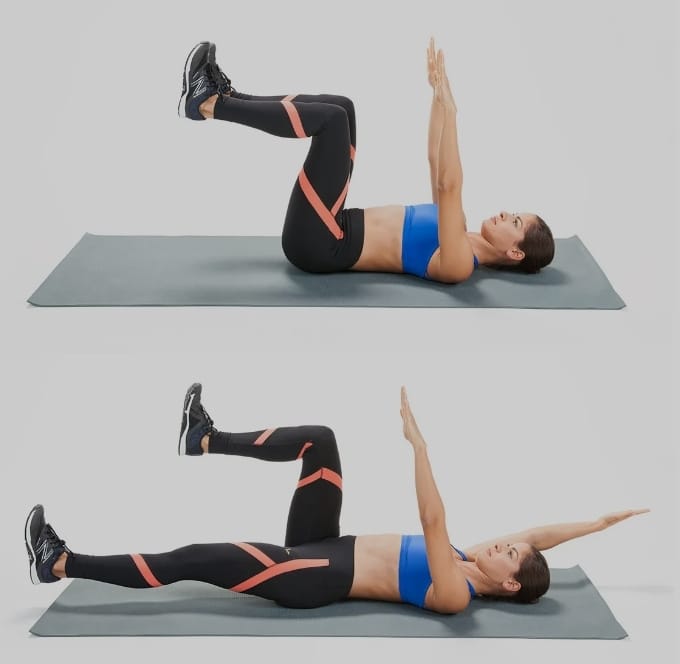 These exercises target the muscles that stabilize the spine and improve spinal alignment, which can reduce pain and prevent further slippage of the vertebrae.
2. Postural Alignment Training
Poor posture can exacerbate the symptoms of spondylolisthesis, causing additional stress on the spine. Maintaining proper alignment reduces strain on the vertebral discs and helps avoid further damage. Physiotherapists at Urban Sports & Physio Centre will guide you on:
These exercises target the muscles that stabilize the spine and improve spinal alignment, which can reduce pain and prevent further slippage of the vertebrae.
2. Postural Alignment Training
Poor posture can exacerbate the symptoms of spondylolisthesis, causing additional stress on the spine. Maintaining proper alignment reduces strain on the vertebral discs and helps avoid further damage. Physiotherapists at Urban Sports & Physio Centre will guide you on:
- Posture correction exercises: These exercises focus on keeping the spine aligned while standing, sitting, and during movement.
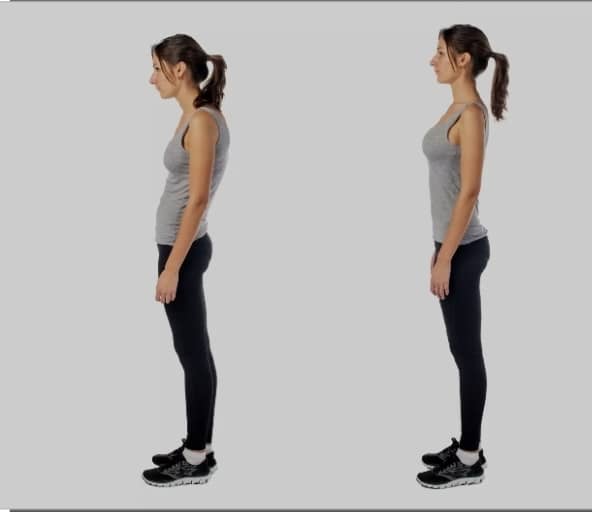
- Ergonomics education: We teach you the importance of correct posture at work and home, offering practical tips on seating, lifting, and moving to protect the spine.
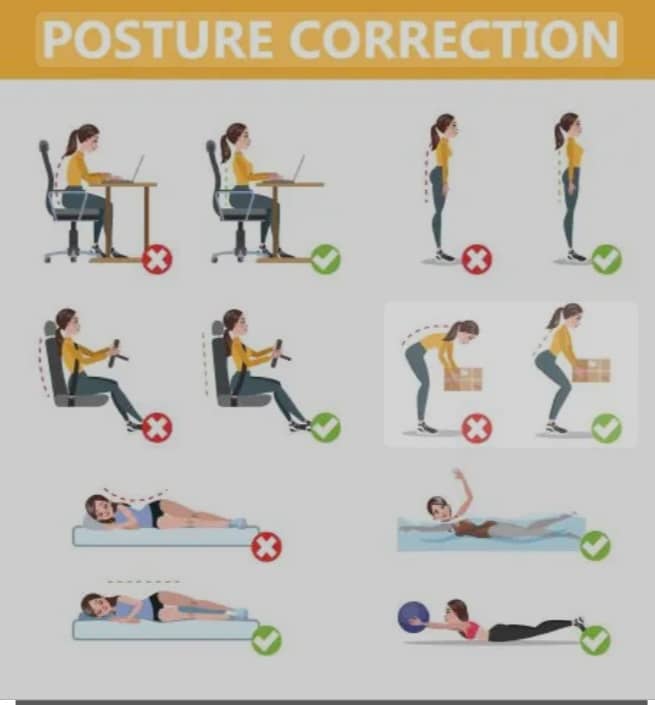 By improving your posture, you can relieve tension on the back and reduce the intensity of symptoms.
3. Manual Therapy for Pain Relief
Manual therapy includes techniques such as joint mobilizations and soft tissue massage to reduce stiffness and alleviate pain in the back. These hands-on treatments help:
By improving your posture, you can relieve tension on the back and reduce the intensity of symptoms.
3. Manual Therapy for Pain Relief
Manual therapy includes techniques such as joint mobilizations and soft tissue massage to reduce stiffness and alleviate pain in the back. These hands-on treatments help:
- Improve spinal flexibility
- Relieve muscle tension
- Improve joint mobility
- Decrease inflammation around the spinal nerves
 Your physiotherapist will use manual therapy methods tailored to your condition to help you recover more quickly and reduce the need for pain medications.
Your physiotherapist will use manual therapy methods tailored to your condition to help you recover more quickly and reduce the need for pain medications.
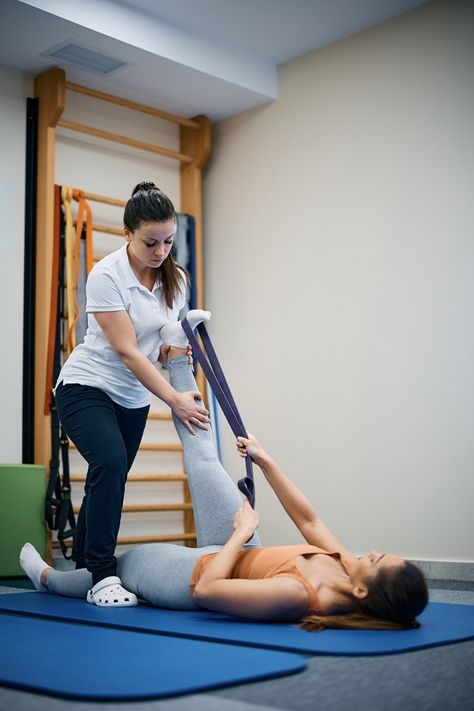 4. Flexibility and Mobility Exercises
Maintaining flexibility in the muscles and joints surrounding the spine is essential for those with spondylolisthesis. Tight muscles can increase tension on the spinal column, contributing to more pain and discomfort. Flexibility exercises that can help include:
4. Flexibility and Mobility Exercises
Maintaining flexibility in the muscles and joints surrounding the spine is essential for those with spondylolisthesis. Tight muscles can increase tension on the spinal column, contributing to more pain and discomfort. Flexibility exercises that can help include:
- Hamstring stretches
- Hip flexor stretches
- Quadriceps stretches
- Lower back stretches
These stretches focus on improving the flexibility of key muscle groups to allow for greater range of motion and reduce strain on the spine.
5. Pain Management Techniques
Managing pain is a critical aspect of treating spondylolisthesis. Physiotherapists at Urban Sports & Physio Centre use various modalities to reduce pain and inflammation. These may include:
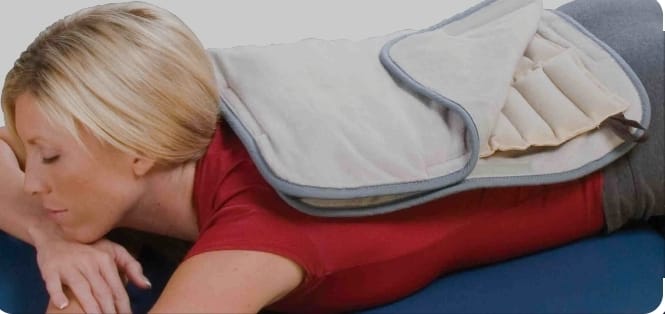 Heat therapy: Applying heat to the affected area increases blood flow and relaxes tight muscles, which can provide relief.
Heat therapy: Applying heat to the affected area increases blood flow and relaxes tight muscles, which can provide relief.
- Cold therapy: Cold packs can reduce inflammation and numb the area to ease pain, particularly during flare-ups.
- Ultrasound therapy: This technique uses sound waves to promote deep tissue healing, reduce inflammation, and improve blood circulation.

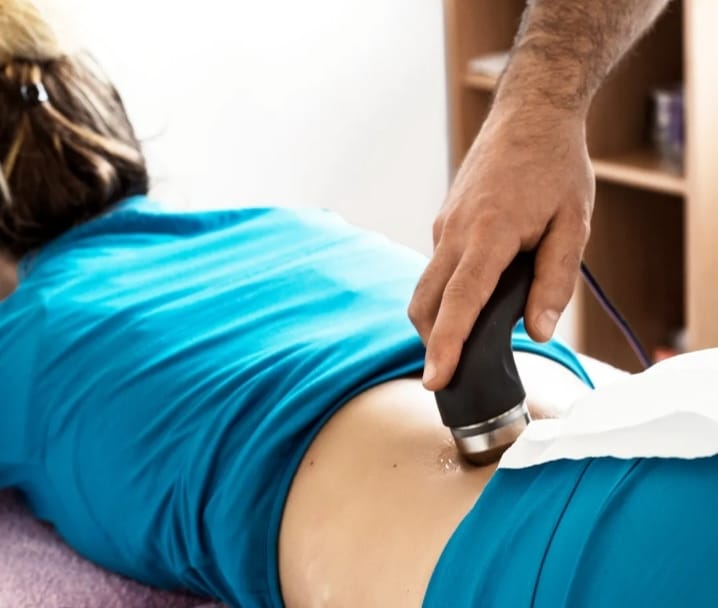 These non-invasive pain management strategies complement your overall rehabilitation plan and support faster healing.
6. Education on Lifestyle Modifications
Education is a key part of managing spondylolisthesis. Physiotherapists at Urban Sports & Physio Centre work with patients to teach strategies for managing symptoms and preventing further slippage, such as:
These non-invasive pain management strategies complement your overall rehabilitation plan and support faster healing.
6. Education on Lifestyle Modifications
Education is a key part of managing spondylolisthesis. Physiotherapists at Urban Sports & Physio Centre work with patients to teach strategies for managing symptoms and preventing further slippage, such as:
- Proper lifting techniques: We’ll show you how to lift heavy objects safely without putting undue strain on your spine.
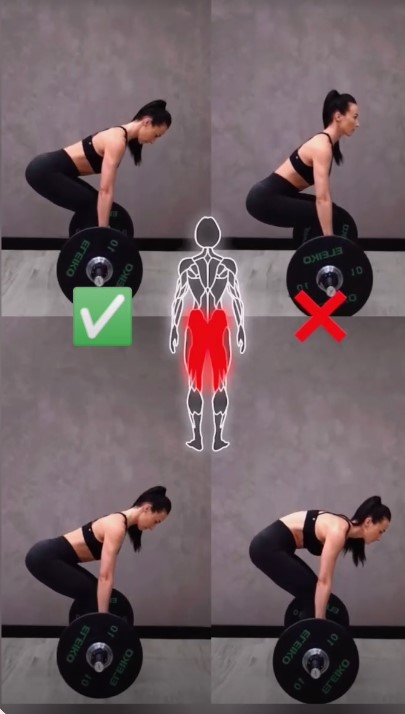
- Activity modification: You may need to limit or modify certain activities to avoid stress on the spine, particularly high-impact exercises.
- Ergonomic adjustments: Adjustments to your workplace or home environment (e.g., chair height, desk setup) can significantly reduce the strain on your spine.
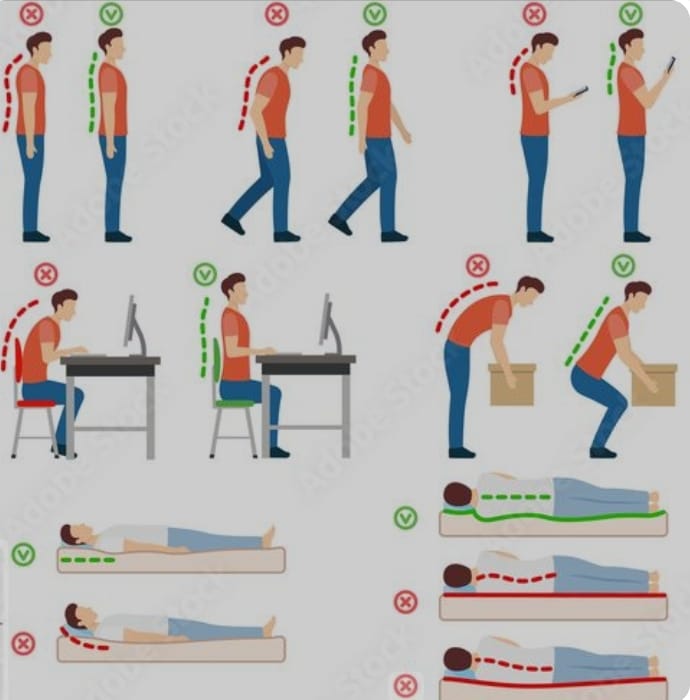 These lifestyle modifications are designed to promote long-term health and prevent further complications.
7. Personalized Rehabilitation Plan
No two cases of spondylolisthesis are the same, and that's why a personalized approach to rehabilitation is essential. At Urban Sports & Physio Centre, our team of physiotherapists will assess your condition through detailed evaluations, including posture analysis and movement screening, to create a customized rehabilitation plan. Your treatment plan may evolve as you progress, ensuring that it continues to meet your specific needs and goals.
These lifestyle modifications are designed to promote long-term health and prevent further complications.
7. Personalized Rehabilitation Plan
No two cases of spondylolisthesis are the same, and that's why a personalized approach to rehabilitation is essential. At Urban Sports & Physio Centre, our team of physiotherapists will assess your condition through detailed evaluations, including posture analysis and movement screening, to create a customized rehabilitation plan. Your treatment plan may evolve as you progress, ensuring that it continues to meet your specific needs and goals.
Long-Term Benefits of Physiotherapy for Spondylolisthesis
With consistent physiotherapy, patients with spondylolisthesis can experience significant improvements in both short-term pain relief and long-term spinal health. The benefits include:
- Reduced pain: Through exercises and pain management techniques, many patients find relief from chronic pain.
- Improved spinal stability: Strengthening the muscles surrounding the spine helps prevent further vertebral slippage and improves overall spinal function.
- Enhanced mobility: Flexibility exercises improve range of motion, allowing you to move more freely without pain.
- Prevention of further degeneration: By improving posture and muscle strength, you can prevent further degeneration of the spine, reducing the need for surgery in the future.
Conclusion
Spondylolisthesis doesn’t have to limit your quality of life. Physiotherapy at Urban Sports & Physio Centre offers a comprehensive approach to managing symptoms, improving spinal stability, and enhancing overall function. Our expert physiotherapists will guide you on your path to pain-free living with tailored rehabilitation programs, hands-on therapy, and lifestyle modifications.
If you’re struggling with spondylolisthesis, contact Urban Sports & Physio Centre today and take the first step toward a pain-free future!
Physiotherapy for Spondylolisthesis: Your Road to Pain-Free Living
Spondylolisthesis is a spinal condition where one vertebra slips forward over the vertebra below it, leading to instability and pressure on nerves, which can cause significant discomfort, pain, and in some cases, even neurological symptoms. While surgery might be necessary for some severe cases, physiotherapy offers a non-invasive approach to manage symptoms and improve function. At Urban Sports & Physio Centre, we specialize in creating personalized treatment plans to help patients with spondylolisthesis live pain-free.
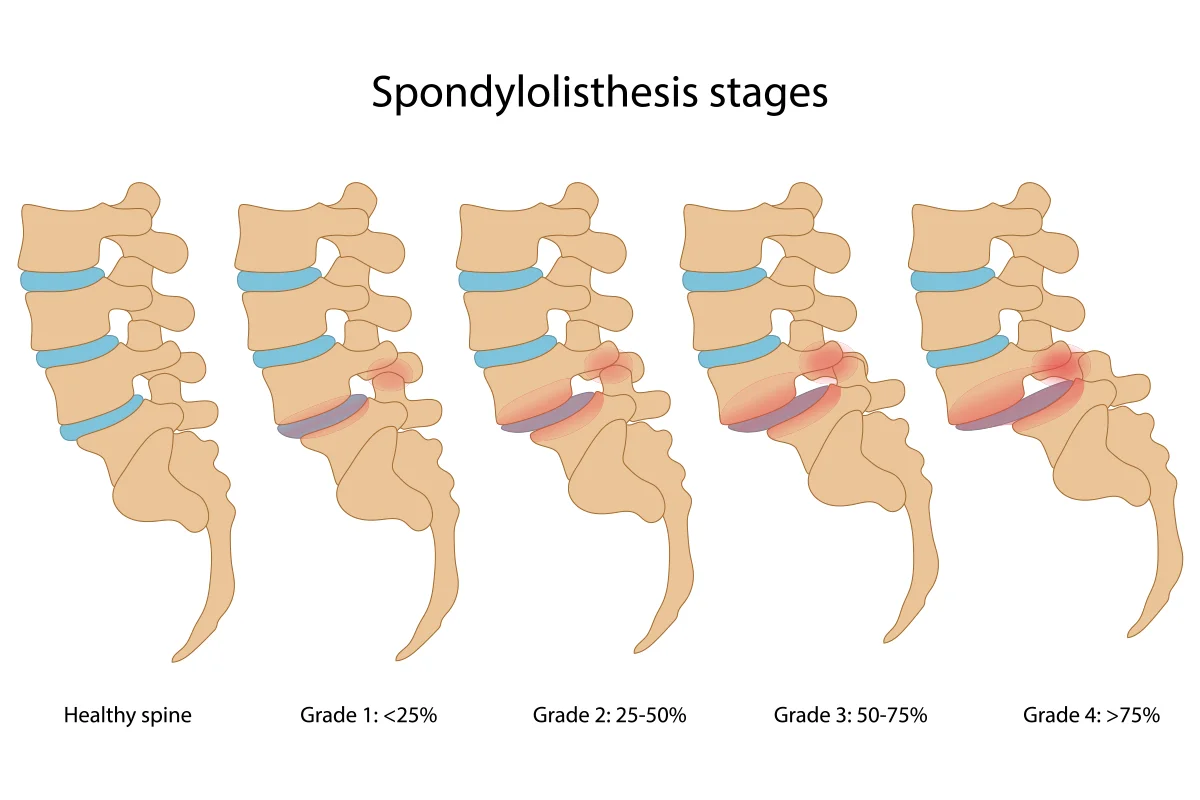 Understanding Spondylolisthesis
Spondylolisthesis can occur due to age-related degeneration of the spine, trauma, or congenital conditions. The condition most commonly affects the lower back (lumbar spine), but can also affect the neck. The displacement of the vertebrae can cause irritation of nearby nerves, resulting in pain, muscle spasms, numbness, and weakness. Some of the symptoms include:
Understanding Spondylolisthesis
Spondylolisthesis can occur due to age-related degeneration of the spine, trauma, or congenital conditions. The condition most commonly affects the lower back (lumbar spine), but can also affect the neck. The displacement of the vertebrae can cause irritation of nearby nerves, resulting in pain, muscle spasms, numbness, and weakness. Some of the symptoms include:
- Lower back pain
- Stiffness in the back
- Muscle spasms
- Numbness or tingling in the legs
- Difficulty walking or standing for extended periods
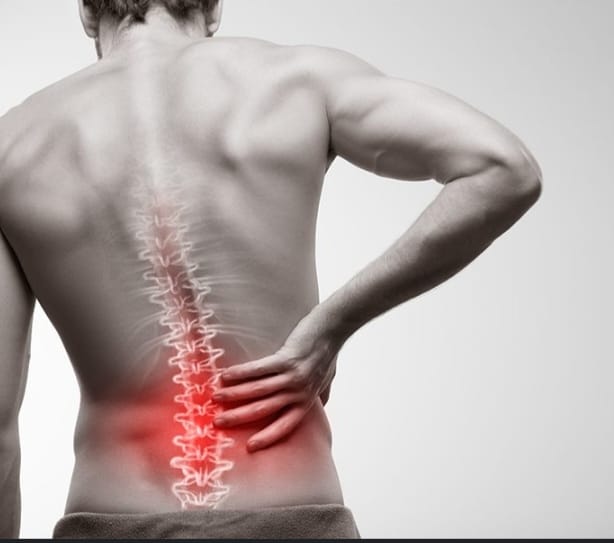 Why Physiotherapy Is Effective for Spondylolisthesis
Physiotherapy addresses spondylolisthesis by focusing on spinal stabilization, pain management, and improving movement and strength. The goal is to reduce the stress on the affected vertebrae, alleviate pain, prevent further slippage, and enhance the overall quality of life.
Here’s how physiotherapy can help you manage spondylolisthesis:
1. Core Strengthening Exercises
One of the most effective ways to manage spondylolisthesis is by strengthening the muscles that support the spine, particularly the core muscles. The core muscles, which include the abdominals, lower back, and pelvic muscles, act as a natural brace for the spine. When these muscles are weak, the spine becomes more vulnerable to instability and increased stress on the vertebrae.
At Urban Sports & Physio Centre, we provide a series of core-strengthening exercises designed to improve posture, stability, and spinal alignment. Common exercises may include:
Why Physiotherapy Is Effective for Spondylolisthesis
Physiotherapy addresses spondylolisthesis by focusing on spinal stabilization, pain management, and improving movement and strength. The goal is to reduce the stress on the affected vertebrae, alleviate pain, prevent further slippage, and enhance the overall quality of life.
Here’s how physiotherapy can help you manage spondylolisthesis:
1. Core Strengthening Exercises
One of the most effective ways to manage spondylolisthesis is by strengthening the muscles that support the spine, particularly the core muscles. The core muscles, which include the abdominals, lower back, and pelvic muscles, act as a natural brace for the spine. When these muscles are weak, the spine becomes more vulnerable to instability and increased stress on the vertebrae.
At Urban Sports & Physio Centre, we provide a series of core-strengthening exercises designed to improve posture, stability, and spinal alignment. Common exercises may include:
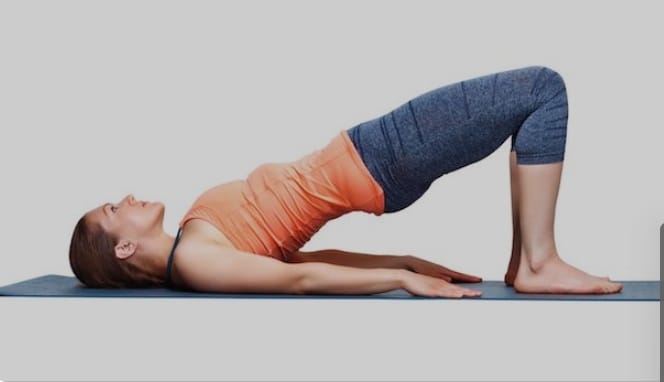
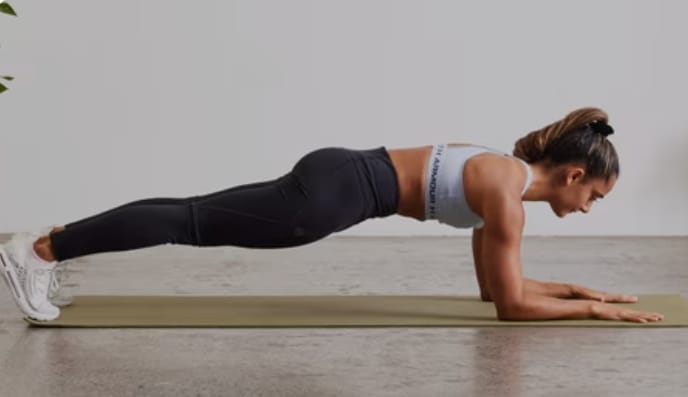 Planks
Planks
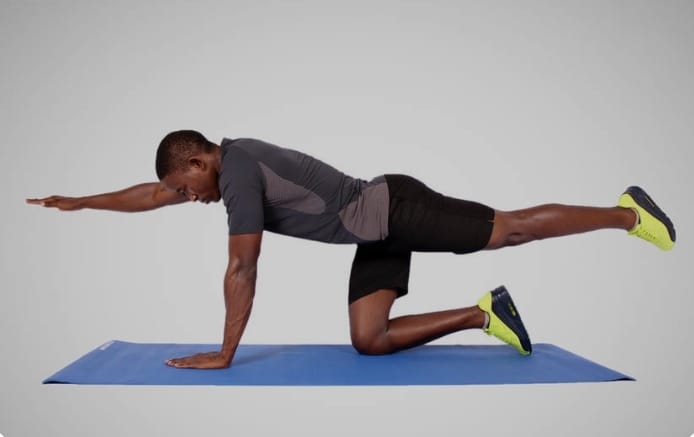
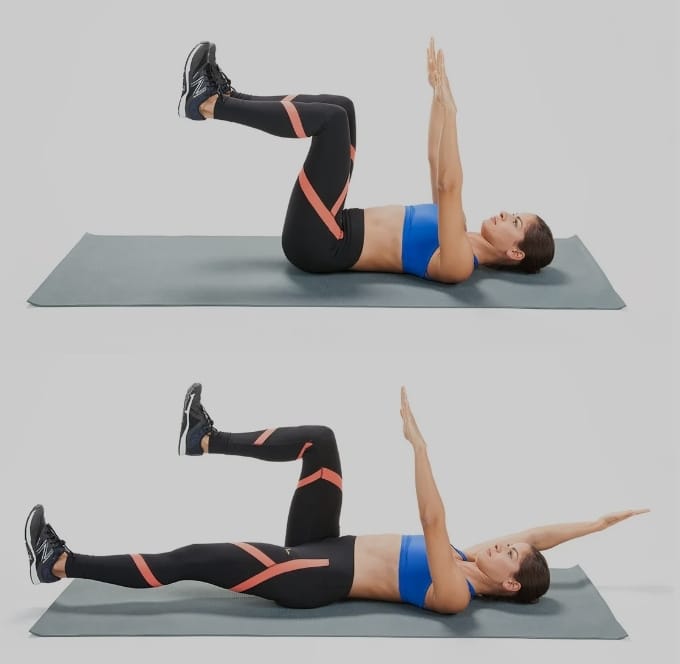 These exercises target the muscles that stabilize the spine and improve spinal alignment, which can reduce pain and prevent further slippage of the vertebrae.
2. Postural Alignment Training
Poor posture can exacerbate the symptoms of spondylolisthesis, causing additional stress on the spine. Maintaining proper alignment reduces strain on the vertebral discs and helps avoid further damage. Physiotherapists at Urban Sports & Physio Centre will guide you on:
These exercises target the muscles that stabilize the spine and improve spinal alignment, which can reduce pain and prevent further slippage of the vertebrae.
2. Postural Alignment Training
Poor posture can exacerbate the symptoms of spondylolisthesis, causing additional stress on the spine. Maintaining proper alignment reduces strain on the vertebral discs and helps avoid further damage. Physiotherapists at Urban Sports & Physio Centre will guide you on:
- Posture correction exercises: These exercises focus on keeping the spine aligned while standing, sitting, and during movement.
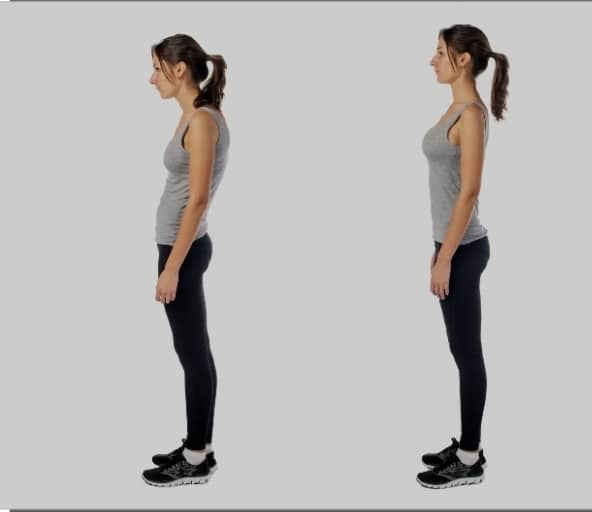
- Ergonomics education: We teach you the importance of correct posture at work and home, offering practical tips on seating, lifting, and moving to protect the spine.
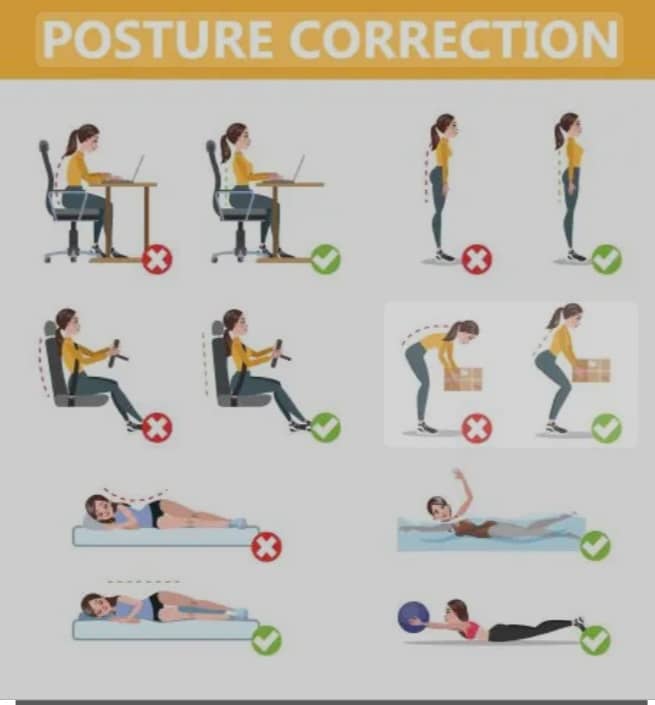 By improving your posture, you can relieve tension on the back and reduce the intensity of symptoms.
3. Manual Therapy for Pain Relief
Manual therapy includes techniques such as joint mobilizations and soft tissue massage to reduce stiffness and alleviate pain in the back. These hands-on treatments help:
By improving your posture, you can relieve tension on the back and reduce the intensity of symptoms.
3. Manual Therapy for Pain Relief
Manual therapy includes techniques such as joint mobilizations and soft tissue massage to reduce stiffness and alleviate pain in the back. These hands-on treatments help:
- Improve spinal flexibility
- Relieve muscle tension
- Improve joint mobility
- Decrease inflammation around the spinal nerves
 Your physiotherapist will use manual therapy methods tailored to your condition to help you recover more quickly and reduce the need for pain medications.
Your physiotherapist will use manual therapy methods tailored to your condition to help you recover more quickly and reduce the need for pain medications.
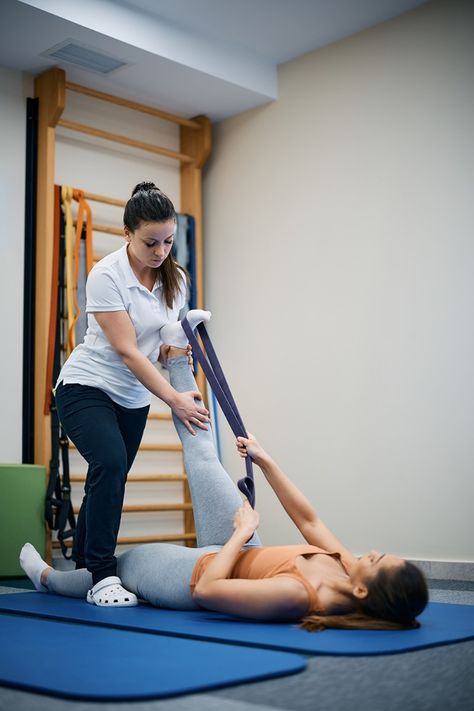 4. Flexibility and Mobility Exercises
Maintaining flexibility in the muscles and joints surrounding the spine is essential for those with spondylolisthesis. Tight muscles can increase tension on the spinal column, contributing to more pain and discomfort. Flexibility exercises that can help include:
4. Flexibility and Mobility Exercises
Maintaining flexibility in the muscles and joints surrounding the spine is essential for those with spondylolisthesis. Tight muscles can increase tension on the spinal column, contributing to more pain and discomfort. Flexibility exercises that can help include:
- Hamstring stretches
- Hip flexor stretches
- Quadriceps stretches
- Lower back stretches
These stretches focus on improving the flexibility of key muscle groups to allow for greater range of motion and reduce strain on the spine.
5. Pain Management Techniques
Managing pain is a critical aspect of treating spondylolisthesis. Physiotherapists at Urban Sports & Physio Centre use various modalities to reduce pain and inflammation. These may include:
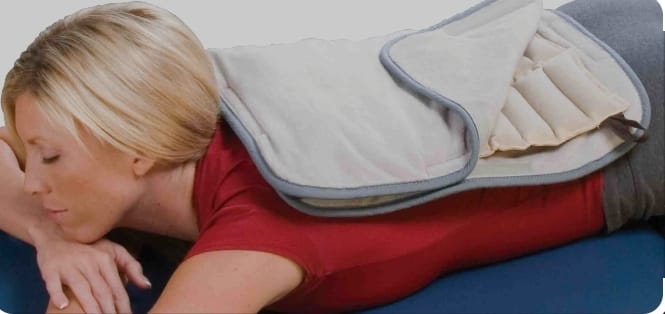 Heat therapy: Applying heat to the affected area increases blood flow and relaxes tight muscles, which can provide relief.
Heat therapy: Applying heat to the affected area increases blood flow and relaxes tight muscles, which can provide relief.
- Cold therapy: Cold packs can reduce inflammation and numb the area to ease pain, particularly during flare-ups.
- Ultrasound therapy: This technique uses sound waves to promote deep tissue healing, reduce inflammation, and improve blood circulation.

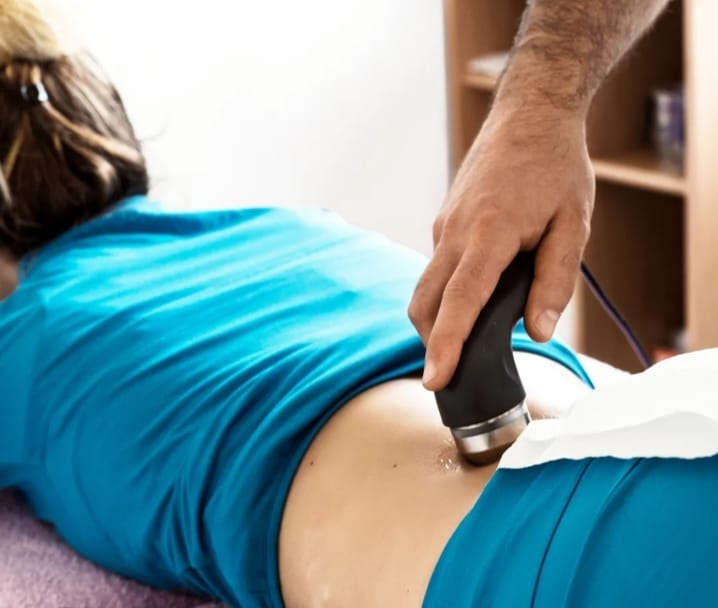 These non-invasive pain management strategies complement your overall rehabilitation plan and support faster healing.
6. Education on Lifestyle Modifications
Education is a key part of managing spondylolisthesis. Physiotherapists at Urban Sports & Physio Centre work with patients to teach strategies for managing symptoms and preventing further slippage, such as:
These non-invasive pain management strategies complement your overall rehabilitation plan and support faster healing.
6. Education on Lifestyle Modifications
Education is a key part of managing spondylolisthesis. Physiotherapists at Urban Sports & Physio Centre work with patients to teach strategies for managing symptoms and preventing further slippage, such as:
- Proper lifting techniques: We’ll show you how to lift heavy objects safely without putting undue strain on your spine.
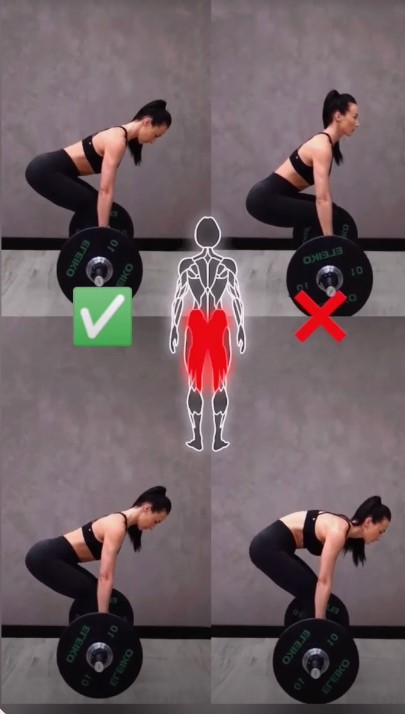
- Activity modification: You may need to limit or modify certain activities to avoid stress on the spine, particularly high-impact exercises.
- Ergonomic adjustments: Adjustments to your workplace or home environment (e.g., chair height, desk setup) can significantly reduce the strain on your spine.
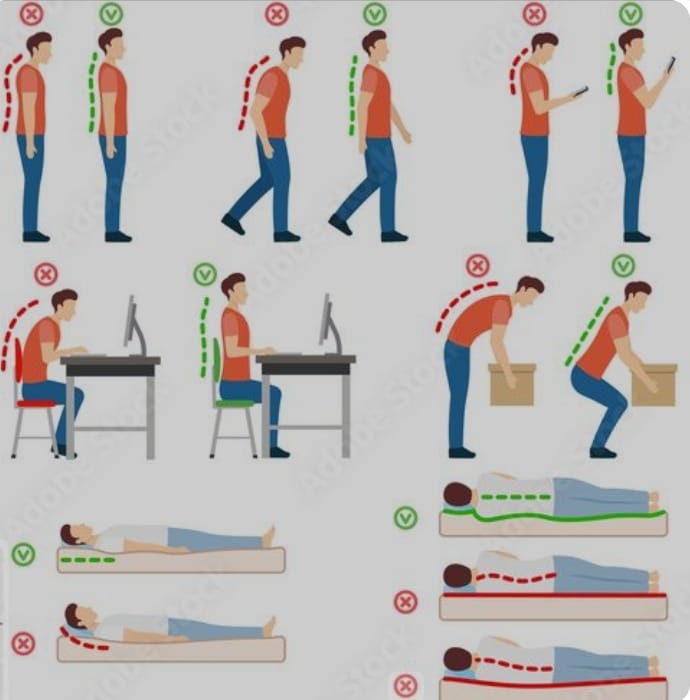 These lifestyle modifications are designed to promote long-term health and prevent further complications.
7. Personalized Rehabilitation Plan
No two cases of spondylolisthesis are the same, and that's why a personalized approach to rehabilitation is essential. At Urban Sports & Physio Centre, our team of physiotherapists will assess your condition through detailed evaluations, including posture analysis and movement screening, to create a customized rehabilitation plan. Your treatment plan may evolve as you progress, ensuring that it continues to meet your specific needs and goals.
These lifestyle modifications are designed to promote long-term health and prevent further complications.
7. Personalized Rehabilitation Plan
No two cases of spondylolisthesis are the same, and that's why a personalized approach to rehabilitation is essential. At Urban Sports & Physio Centre, our team of physiotherapists will assess your condition through detailed evaluations, including posture analysis and movement screening, to create a customized rehabilitation plan. Your treatment plan may evolve as you progress, ensuring that it continues to meet your specific needs and goals.
Long-Term Benefits of Physiotherapy for Spondylolisthesis
With consistent physiotherapy, patients with spondylolisthesis can experience significant improvements in both short-term pain relief and long-term spinal health. The benefits include:
- Reduced pain: Through exercises and pain management techniques, many patients find relief from chronic pain.
- Improved spinal stability: Strengthening the muscles surrounding the spine helps prevent further vertebral slippage and improves overall spinal function.
- Enhanced mobility: Flexibility exercises improve range of motion, allowing you to move more freely without pain.
- Prevention of further degeneration: By improving posture and muscle strength, you can prevent further degeneration of the spine, reducing the need for surgery in the future.
Conclusion
Spondylolisthesis doesn’t have to limit your quality of life. Physiotherapy at Urban Sports & Physio Centre offers a comprehensive approach to managing symptoms, improving spinal stability, and enhancing overall function. Our expert physiotherapists will guide you on your path to pain-free living with tailored rehabilitation programs, hands-on therapy, and lifestyle modifications.
If you’re struggling with spondylolisthesis, contact Urban Sports & Physio Centre today and take the first step toward a pain-free future!
#PhysioForSpondylolisthesisJB ##SpondylolisthesisRecoverJB #PhysioForBackPainJB #SpineHealthJB #SpondylolisthesisTreatment




 Pelvic tilts
Pelvic tilts
 Planks
Planks





 Heat therapy: Applying heat to the affected area increases blood flow and relaxes tight muscles, which can provide relief.
Heat therapy: Applying heat to the affected area increases blood flow and relaxes tight muscles, which can provide relief.







 Pelvic tilts
Pelvic tilts
 Planks
Planks





 Heat therapy: Applying heat to the affected area increases blood flow and relaxes tight muscles, which can provide relief.
Heat therapy: Applying heat to the affected area increases blood flow and relaxes tight muscles, which can provide relief.




 Vietnam
Vietnam